Assassination expert says Cubans encouraged Oswald to kill JFK
Evidence suggests President Johnson covered up Cuba link to avoid World War III
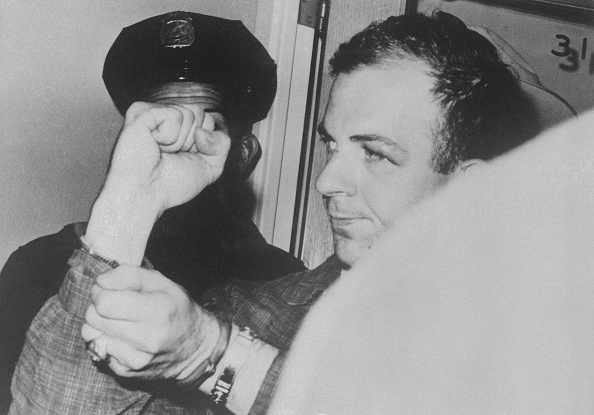
By 1964, two brothers secretly working for the FBI had been informing on the Communist Party for 10 years. One brother, Morris Childs, had risen to the position of official courier of funds from Moscow to the Communist Party of the USA. They were so highly regarded in the party that they often interacted with leaders of Communist nations. That June of 1964, they met with an unwitting Cuban leader Fidel Castro in Communist-run Cuba, seven months after the assassination of President John F. Kennedy in Dallas on November 22, 1963.
The brothers listened to Castro tell them about a trip by Kennedy’s accused assassin, Lee Harvey Oswald, to the Cuban embassy in Mexico City in September 1963. During the visit, Oswald sought a visa to immigrate to Cuba, but grew desperate when he could not get one right away.
“These were two of the best sources in the history of the FBI,” said Gus Russo, author and one of the world’s foremost experts on the JFK assassination. “I interviewed their case officer, Ray Wannall, who said these guys never exaggerated, never made a mistake in 25 years of reporting.”
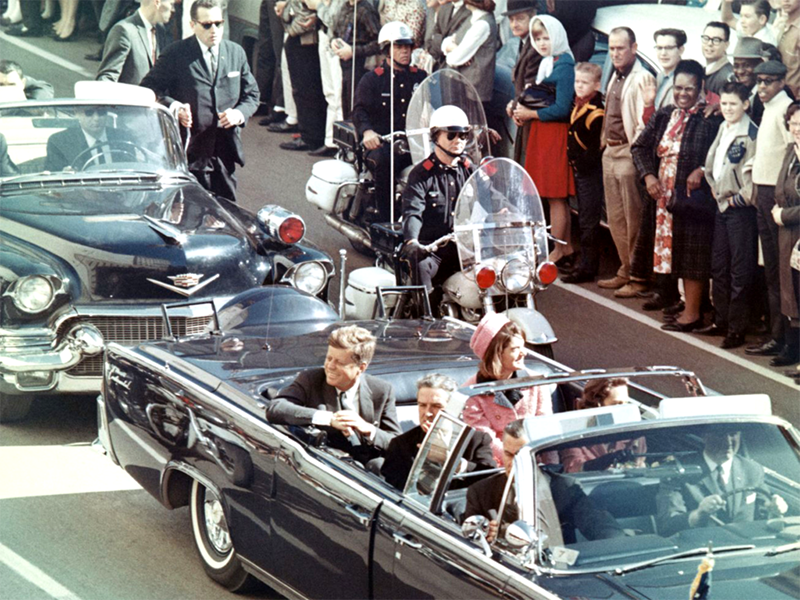
“What they reported was that Castro told them that Oswald had come into the embassy in Mexico City – and Castro said, ‘I knew about it when it happened,’ it was reported to him – and he [Oswald] offered to kill President Kennedy,” Russo said. “He said, ‘I’ll kill that bastard Kennedy,’ ostensibly for the [Cuban] revolution.”
The Childs brothers reported the conversation to the FBI. The information was given to the Warren Commission, but nothing was done about it and the written report was kept top secret until the mid-1990s, a document “that said what Castro knew about Oswald’s intention,” Russo said. It is believed to be the last Warren Commission document declassified, the bulk having been released in the 1960s.
To Russo, the Cuban connection is key to understanding Oswald’s motive for – and what led to – the Kennedy assassination, a shocking, history-altering act of terrorism that marks its 58th anniversary this week.
Oswald fired at Kennedy from the sixth-floor window of the Texas School Book Depository building where Oswald had started working several weeks before. He used a Mannlicher-style Carcano bolt-action rifle (more correctly, an Italian-made, World War II military surplus Model 91/38 Carcano with a Japanese-made 4×18 telescopic sight). He hit Kennedy twice, once in the upper right back (exiting through the throat) and fatally in the top rear of the president’s head, exiting through the upper right side of Kennedy’s skull. A third shot missed completely. As Russo explained, after the missed shot, Oswald had nine full seconds — not 5.6 seconds, as mistakenly reported for years — plenty of time to get off the two shots that struck the president.
The Cuban connection
After decades of speculation, the release in the 1980s, 1990s and 2000s of troves of long-suppressed American, Russian and Cuban intelligence documents, and statements from former Cuban and Russian spies who defected and told their stories to the U.S., the Cuban connection emerges as the most plausible explanation for the JFK assassination.
And, no, according to Russo, despite the sale of hundreds of conspiracy books on the topic, the Mob was not involved in killing Kennedy – nor were the CIA, FBI, Dallas Police, rich right-wingers, Vice President Lyndon Johnson, et al. There was no gunfire from the “grassy knoll” of Dealey Plaza on Elm Street in Dallas, and no shooter other than Oswald. In fact, Russo said, the story of the JFK assassination stopped being about Dealey Plaza the moment of the fatal head shot.
Russo, a member of The Mob Museum’s Advisory Council, served as co-lead reporter for the 1993 documentary Who Was Lee Harvey Oswald? for the Frontline show on PBS. He has written two books, Live by the Sword and Brothers in Arms, based on government documents and interviews, detailing efforts by John Kennedy and his brother, Attorney General Robert Kennedy, to eliminate Castro, how Oswald’s obsession with Castro led him to murder Kennedy, and how Castro and his intelligence agents knew in advance about Oswald’s intentions. Russo has been a reporter, writer or producer on 10 other major-network Kennedy shows.
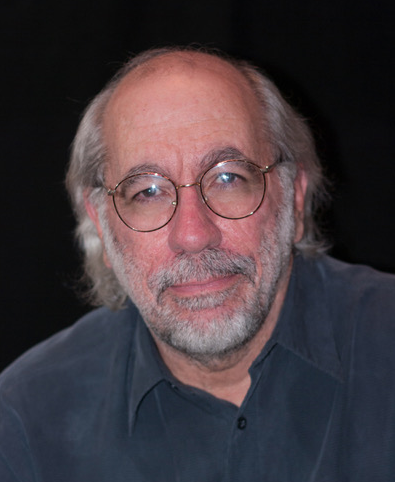
Russo was part of a 2005 German TV team researching the assassination that made trips to Mexico, Cuba and South America to speak with witnesses, among them retired former Cuban spies who reported that they had been aware of Oswald since late 1962, when the KGB forwarded his Russian sojourn file to Havana (Oswald left for the USSR in 1959 and spent more than two years in Minsk, where he interacted with both KGB and Cuban agents, who trained just blocks from his apartment).
“We also learned that Oswald made his offer out of left field in the Cuban embassy,” Russo added, “and the Cuban agents sort of huddled together later, wondering, ‘What do we do with this guy?’”
“The decision was made to encourage him” to kill Kennedy, Russo said. “[Oswald] was there for six days in Mexico City. . . . But the witnesses that we’ve uncovered say that he was meeting for lunches and dinners and going to Communist get-togethers. He was meeting with Castro’s intelligence officers, and they were encouraging him.”
“One officer told us that, ‘We offered him money, but he wasn’t interested in money. It was all ideological for him.’ So [the Cuban agents] gave him a few dollars to go to the bullfights and to walk around Mexico City. But that wasn’t his intent. He wanted to prove himself to the [Cuban] revolution. And, so [the ex-agents said], ‘We encouraged him to go ahead and try. We didn’t know if he would do it, or be lucky, but what could it hurt?’”
The Cuban spies in Mexico City knew that the Americans under President Kennedy had been trying to assassinate Castro for years, “so why not let some nut take a shot?” Russo said. “They didn’t know if it would be successful.”
However, while the Cubans encouraged Oswald to carry out his plan to kill Kennedy, that was the extent of their participation.
“They made promises to Oswald, from what we were told, and again this has never been adjudicated, but I can tell you what they told us. Two sources in Mexico City who were with Cuban intelligence said that, ‘We promised Oswald we’d rescue him if he was successful. And we would fly him to Havana.’”
“Now, it turns out there were a lot of reports that a plane was at a private airfield in Dallas that day, and that it took off for Havana after the assassination. And one of these Cuban sources told us, ‘We weren’t going to rescue him and take him to Havana, we were going to dump him over the Gulf of Mexico. We didn’t want to have anything to do with this guy.’ Their idea was to get him and kill him, and that was going to be the end of it.”
But as Oswald walked along a Dallas street an hour after the shooting, with a police bulletin out on his general description, police officer J.D. Tippit happened along in a patrol car. When he got out to encounter the suspect, Oswald shot him dead, three shots to the body, and one point-blank to the head. Tippit, Russo said, “possibly stopped him on the way to this [Cuban] rendezvous, and that changed the whole layout of things.”
Russo makes it clear that neither Castro nor his Cuban cohorts played a part in the shooting of JFK, that Oswald acted alone on that. They, of course, did not report Oswald’s threating statements to U.S. authorities. They only lied to him about a rescue and sat back to see if he would actually do it.
Hours before the murder, the cunning Castro had instructed an intelligence officer to steer shortwave radio antennas away from surveilling U.S. transmissions from Washington, D.C., and Miami and toward Dallas, Russo said. He needed to be the first to know if this crazy guy actually pulled it off.
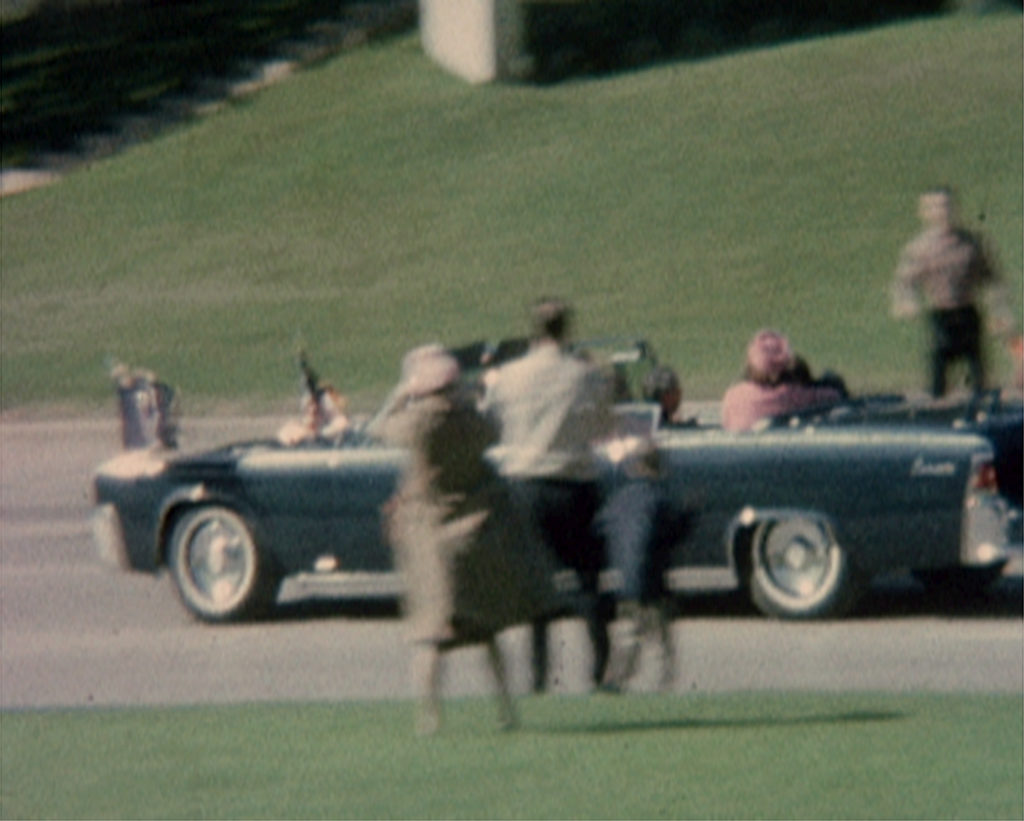
About 12:22 p.m., Castro listened in to the sudden, frenzied live broadcast accounts of the president’s mortal wounding in an open limousine.
“So, yes, it comes from the fact that Castro was told in real time that this nut came into the embassy, was going to do something, try something when Kennedy came to Dallas. He remembered that. ‘Oh, Kennedy’s coming to Dallas? Turn the antennas. Let’s see if it really happens. I want to hear the news when it comes out.’ And lo and behold, he heard immediately.”
Russo advanced this Cuban connection theory based not only on interviews, but on documentary evidence from the American, Russian, Mexican and other governments, many unclassified and released since the 1990s. They continue to arrive in Russo’s mailbox: In 2020, Russo received long-suppressed pages from the Mexican government’s own investigation.
The Warren Commission, created by President Johnson to investigate the assassination, failed to seriously investigate Oswald’s doings in Mexico City with the Cubans, Russo said. The problem was, the U.S. government kept JFK’s intrigues – plots to kill Castro and attempts to destabilize Cuba with covert U.S. commando raids on the island – an official secret, even from the Warren Commission. This cover-up denied the commission the ability to follow that critical lead, Russo said. Conversely, Oswald, a Castro fanatic, did know, based on what he read for months in pro-Castro newspapers such as The Militant, and possibly from conversations with Cuban contacts.
Those higher-ups who knew about the anti-Castro schemes – and did not want them revealed – included the President’s brother, Robert; President Johnson; and former CIA director Allen Dulles. Dulles, appointed to the Warren Commission and a close Kennedy family friend, misled commissioners so they would not closely examine Oswald’s activities with Cubans in Mexico City, Russo said.
“So the Warren Commission was as kept in the dark as the average American,” he said. “They weren’t told. Thus they had no motive for the crime of the century.”
Mark Lane and the Russians
The commission released its report in the fall of 1964. Then in 1966, the great JFK conspiracy movement exploded with lawyer Mark Lane’s bestselling book, Rush to Judgment, criticizing the Warren Commission’s conclusion that Oswald acted alone, and written as a kind of legal defense of Oswald.
The book caused a sensation for years, and influenced many young people into believing others may have been responsible for the assassination. Lane started such infamous conspiracy tales as a second shooter at the grassy knoll, that the CIA planned it all and set up an innocent Oswald, that someone other than Oswald killed Officer Tippit, and that the Mafia sent Dallas nightclub owner Jack Ruby to gun down and silence Oswald. The reports tarnished the Warren Commission’s findings with the public.
However, Lane’s work turned out to be “completely inaccurate, there were a lot of falsehoods in it . . . it was a total fiction,” Russo said.
In fact, Vasili Mitrokhin, who for years had been the Russian KGB archivist, claimed in a 1999 book he co-authored, The Sword and the Shield, that the KGB spy agency clandestinely fed disinformation on the JFK killing to an undercover KGB source in America, a faux journalist named Genrikh Borovik. Mitrokhin contended that Lane (unawares) trusted and used this disinformation to write his book, falsely alleging CIA involvement, meant to discredit the U.S. government in the eyes of Americans. It proved effective in doing that.
Then, in 1975, the Zapruder film, a color 8mm home movie of Kennedy’s limousine as the shots hit him, was shown on the “Good Night America” ABC television show. Many people thought the film showed the fatal shot to Kennedy’s head came from the front, not the rear – suggesting that a second assailant shot the president.
Amid public concern over the Zapruder film, and allegations of a CIA cover-up, the U.S. House Select Committee on Assassinations investigated the JFK case in 1978. Its report, based on a recording from a police motorcycle on November 22, concluded that a fourth shot had been fired at Kennedy, indicating a conspiracy and a second shooter from the grassy knoll.
A divided House committee theorized that the Mafia hired the supposed grassy knoll shooter. It found that the Cuban government was not involved, but anti-Castro Cubans may have been.
However, not long after, another acoustic analysis discredited the value of the police recording, and dealt another blow to the multiple shooter conspiracy theory. The destruction of the recording theory has continued over the years with a number of follow-up scientific studies.
Jim Garrison and Oliver Stone
The next major episode in the JFK conspiracy saga came in 1991 with the release of director Oliver Stone’s movie JFK. (Russo initially consulted for the project, but withdrew after he read the script. Later, he agreed to help Stone’s researcher footnote the book of the movie.) The film, with a cast of Hollywood stars, portrayed most of the leading conspiracy notions, ending with the criminal case brought by New Orleans District Attorney Jim Garrison.
Garrison argued against the Warren Commission’s “single bullet theory” that a shot from Oswald’s rifle wounded both Kennedy and Texas Governor John Connelly in the limousine. Garrison also believed Oswald did not shoot Kennedy, that Oswald was actually “a hero” wrongly blamed for the shooting, and that the CIA engineered what amounted to a coup against the president.
“Jim Garrison was another really crazy guy,” Russo said. “And when he decided that he was going to go after the assassination theory, [arguing] that the CIA killed Kennedy and Oswald was some innocent patsy, he was influenced by Mark Lane [who] was part of his counsel, his inner circle telling him all these things.
“The KGB was also feeding him things, unbeknownst to Garrison. He was being fed outright lies by the KGB psychological warfare division, Service A. That’s what they did. They really jumped on the Kennedy case and planted disinformation all around that Garrison would glom on to. They even wrote an entire book manuscript [later released as Farewell, America], under a pseudonym, and delivered it to him. The next day, Garrison held a press conference, claiming that he solved the case.”
In no way a hero, Oswald, Russo said, continually beat his wife, Marina, tried to kill General Edwin Walker – with the same rifle he used to shoot Kennedy – earlier in 1963, murdered President Kennedy and Officer Tippit, and finally tried to shoot a second Dallas officer while resisting arrest.
He was “a serial murderer wannabe and a violent sociopath, not exactly the kind of guy the CIA would hire as an officer or asset,” Russo said.
“So that’s who he was. And everything you hear about conspiracies and so forth, you have to take that into account and color it with that knowledge. “
What about the Mob?
While working on the Frontline show on Oswald, Russo and other researchers determined early on that Oswald shot Kennedy by himself, a vitally important fact.
“The ‘Mob did it’ theories conveniently ignore that. Oswald did it. And once you accept that, you have to look at his life and see if he was ever connected to anybody remotely in organized crime, which he wasn’t. He was all about Cuba. He was all about Communism. He didn’t know anybody in that world. Nobody. He pulled the trigger. So how do you turn this into a ‘Mob did it’ thing?”
Organized crime had nothing to do with the Kennedy assassination, Russo said.
“This whole concept of the Mob killing Kennedy is based on nothing, other than they were blaming the Mob for everything in those days,” Russo said. “Organized crime did everything. There’s no evidence that would come close to standing up in court. There’s nothing. So, it just took hold because the Mafia is the worst thing in the world and they do everything. But they’ve never killed a mayor, a governor, a president or a cop that I know of. They have rules, and they certainly had rules back in those days about you don’t mess with politicians, law enforcement, because they’ll come down on us. And so they are going to kill Kennedy with [aggressive anti-Mob prosecutor] Bobby Kennedy as attorney general? It makes no sense.”
Russo added:
“I interviewed so many mobsters for my other books on organized crime, and they would tell me things like, ‘Yeah, we hated Bobby, but we loved Jack. He was one of us. We used to party with him.’ One of the guys said, ‘We used to party with him in the steam room at the Sands Hotel [in Las Vegas]. We loved Jack. We shared girlfriends with him. Why would we shoot him?’ And there’s just nothing there. And again, there’s no link of these guys to Oswald, who was obsessed with Kennedy’s Cuba policy and was a very violent guy.”
What about Ruby?
Yet another Mob-related conspiracy theory centers on Jack Ruby, the man who shot Oswald on live television on November 24, 1963, as officers were transferring the suspect from the Dallas Police Department to the county jail. The viewpoint is that Ruby was associated with the underworld and received orders to kill Oswald to prevent him from revealing a Mob conspiracy.
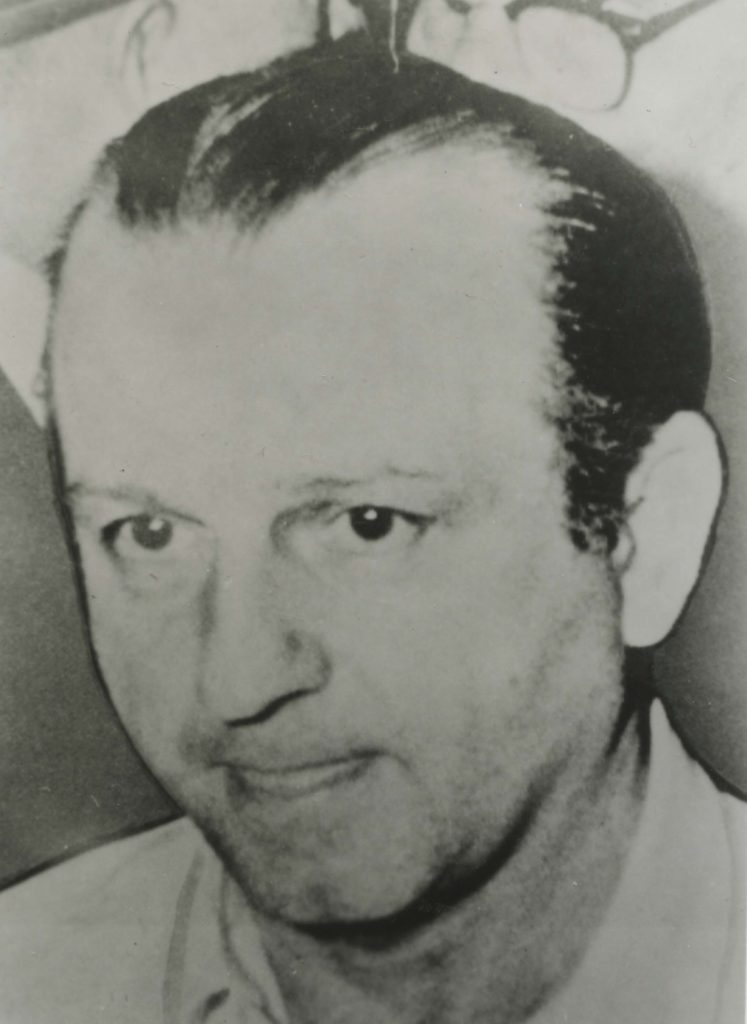
“The ties of Ruby to organized crime are beyond loose,” Russo said. “I mean, when he was young, he was in Chicago a quote-end-quote ‘numbers runner’ for the Mob, which a lot of young guys on the West Side of Chicago were involved with. It didn’t mean he was a gangster. As a matter of fact, both FBI and police intelligence agents in Chicago told me Ruby was forced out of Chicago when he moved to Dallas because he was an informant on the Mob for the police. And you look in his file, FBI file, you see ‘potential criminal informant.’ . . . They interviewed Ruby all the time.”
Russo elaborated on Ruby’s alleged connections:
“He loved law enforcement. He was a friend of the Dallas cops. His club was a block or so away from the Dallas police station. He was not a borderline Mob guy, really. That’s been exaggerated beyond all measure. He dealt with organized crime like every other Southern nightclub owner who had a strip club. The only place you could get strippers and cheap booze was through dealing with Southern Mob guys who were controlling all of that stuff. Sure, he knew Mob guys. Dean Martin knew Mob guys . . . [so did] Frank Sinatra. Everybody knew Mob guys who were in the nightclub business. But you can’t turn that into a Mob theory. So that was the extent of his Mob thing.”
Another problem with Ruby is motive.
“He worshiped JFK,” Russo said. “I mean, he worshipped all presidents. He worshipped the city of Dallas. He worshipped the police department. He had a card in his wallet, ‘Honorary Sheriff, Jack Ruby.’ All the cops would go to his bar and get comped. And he practically lived at the police station. He was there almost every day of his life, just hanging out with the cops. OK, so this Mob guy who hangs out with cops . . .
“[What] you have to know that’s key to this is his love of Judaism. His name was Jacob Rubenstein and he was a devout Jew. In Dallas, he was worried that locals believed ‘the Jews did it.’ Why? Because there was a full-page ad in the local paper the day Kennedy came to town, calling Kennedy a traitor, and it was paid for by a man with a Jewish last name, Bernard Weissman. And Ruby said after the assassination, ‘They’re going to think we did it. We worshipped Kennedy. We didn’t do it.’ Ruby, when he wasn’t at the police station that weekend, he spent hours and hours driving around Dallas looking for Weissman. He was going to kill him, because he was destroying Jews — Ruby thought he was going to destroy the reputation of Jews. And when he shot Oswald, he did it to avenge the president, to show that the Jews didn’t kill Kennedy, ‘We avenged him.’ And he said that in his diary and to anyone who would listen to the day he died. He tried to tell [Warren Commission Chairman] Earl Warren that, that he did this to show there’s a conspiracy against Jews in Dallas that’s making it look like we did it. For him, it was about Judaism and his worship of JFK.”
Russo dismisses the idea that Ruby was acting as a Mob hitman.
“When Oswald came out [of the police station] – and Ruby was a very mentally ill person himself, he had a lot of his own personal issues, very short fuse, temperamental guy, always carried a pistol because he had been mugged years earlier. So the pistol just happened to be there. He saw Oswald and lost it. And he said, I’ll just fix it all in one fell swoop. He arrived at the scene in the police basement with about 10 seconds to spare, because he wasn’t looking for Oswald. He went downtown to do something else. He ambled down the ramp, there’s Oswald, boom. What Mob hit man is going to casually show up 10 seconds before the guy is exposed for only a few seconds walking to a van? He just happened to be there at the right time and he snapped. And that is what he said to the day he died.”
Why do so many Americans believe to this day that more than one shooter, aside from Lee Harvey Oswald, fired at and hit Kennedy?
One reason is the lasting impact of JFK on the American public’s perception of the assassination. Stone’s film, which showed a blow-up of the Zapruder film clip of the fatal head shot, advanced many since-debunked conspiracy theories, principally that Kennedy was shot in the front, not the rear, meaning more than one shooter took part.
“Movies are powerful,” Russo said, “and especially in an era when young people aren’t reading. Movies are their main influence, and it’s terrible that that movie JFK got the last word, so to speak, on what happened for a generation who doesn’t read. I’m always hoping that someday the other movie will come out, the true story, and I try and get that done because that’s the only way we can get to young people.”
What about ballistics?
The second gunman idea really took hold when the Zapruder film was finally released in the 1970s, Russo said. “And to the untrained eye, when you look at it, you see Kennedy’s head go back when it’s shot, and well, he must have been shot from the front. And so it really took off from that. And even I believed it. I was a young person. I saw the head go back, so I thought it must have been a shot from the front. Doesn’t work that way when you actually talk to forensic people and ballistics people. The only way something would make your head go back that violently is a bazooka. A bullet doesn’t do that. A bullet enters cleanly and blows out the opposite side. Especially this particular bullet, the cartridges were so big, and they tumbled so violently. So it entered Kennedy’s head cleanly in the back, but it caused an explosion coming out the front.”
Russo also dismisses the notion that Oswald could not have killed Kennedy from that distance.
“Oswald was every bit a good enough shot to pull this off. One of the reasons people think that he wasn’t was a long time ago we were given the wrong foundation of what happened. You know, garbage in, garbage out. We were told by conspiracy-minded writers and authors that he fired three accurate shots in 5.6 seconds, which is, admittedly, impossible. In fact, there were actually just two hits in about nine seconds. At zero on a clock, the first shot misses. He’s got nine seconds left until you see the final head shot. There’s two hits in that remaining nine seconds. That’s extremely easy in a space that small, with a car going slowly away from you … almost not moving. With a four-power scope, you couldn’t miss . . . fish in a barrel.
“Oswald was a good shot in the Marines. He had a sharpshooter’s rating. He hit 48 out of 50 rapid-fire bullseyes from 200 yards, with a bolt-action weapon. Kennedy was much closer than that in Dealey Plaza, and Oswald had been practicing rapid-fire bolt action shooting all summer. Marina [Oswald’s wife] said he would sit on the front porch in their little apartment and dry fire at cars going by, rapid fire. He was going to rifle target ranges. He could make two good shots in nine seconds. But we were told he fired three in five seconds. So how could he do that? He didn’t.
“A lot of people who think there was a conspiracy haven’t been to Dallas. And when you go there, it can change you pretty quickly. Number one, you see how small it is, how easy the shots were. People all the time say, ‘I had no idea it was this small.’ And the other thing is they realize that the grassy knoll isn’t in front of him anyway. The grassy knoll is at a 90-degree angle to Kennedy. If the bullet had hit here [the right side of Kennedy’s head], it would hit Jackie coming out here [the left side]. It’s not in front. There’s a railroad overpass in front. So even if you think he was shot from the front, it ain’t the grassy knoll. It’s where over a dozen railroad workers were standing watching the parade, and they never saw a rifleman. You have to go there. If you think about it and you watch the cars, you realize everything you’ve been told is wrong. The grassy knoll is to the side, Oswald’s practically on top of him.”
Postscript
Based on his research, Russo described the aftermath of Kennedy’s death, and the devil’s bargain President Lyndon Johnson felt he had to make. At the White House in the evening of November 22, 1963, newly sworn President Johnson sat bewildered, as did the rest of the nation, in the hours following the assassination. But Johnson that night would hear more disconcerting news.
CIA Director John McCone told Johnson of confidential intelligence reports about a trip Kennedy’s alleged assassin, Lee Harvey Oswald, took only weeks before, in September, to the Cuban embassy in Mexico City. LBJ, then 55 years old, recalled how an assassination of a head of state in an open car in Serbia in 1914 triggered World War I. Meanwhile, still fresh in most people’s minds, the United States and the Soviet Union had barely averted nuclear war in a crisis over Russian missiles in Cuba little more than a year before in October 1962.
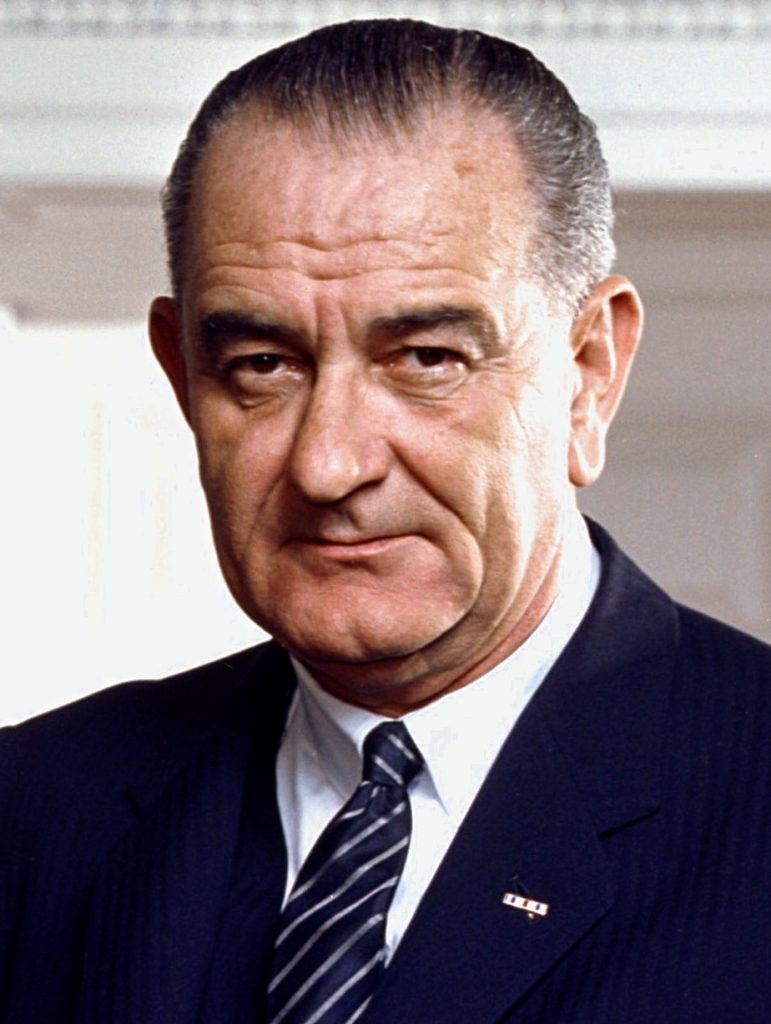
McCone surmised that the Cubans were involved in Kennedy’s murder. And outside pressure was building. Authorities in Mexico detained Silvia Duran, a Cuban embassy employee said to have met with the suspect Oswald in Mexico City. Castro himself recently made public threats against JFK and JFK’s brother, Robert Kennedy. McCone’s reports that day refer to Cuban officials acting in great alarm.
McCone, after reviewing his agency’s secret statements, had come to a conclusion about the assassination. “It was the Castro connection,” he told the new president.
Johnson also spoke by phone with his own longtime sources in the Mexican government, as well as CIA and FBI officers stationed in Mexico City.
Thus, Johnson knew the troubling story within only hours of Kennedy’s death, the connections Cuban intelligence and Cuban leader Fidel Castro had to Oswald. Should he reveal this link to the American people?
LBJ also heard about efforts by the Kennedy administration to destabilize Cuba and kill Castro. Johnson would later remark, more than once, that “Kennedy wanted to kill Castro, but Castro got him first.”
According to a former LBJ speechwriter, Leo Janos, Johnson phoned a friend, Georgia Democratic Senator Richard Russell, who advised him not to. “Don’t let it out,” the senator said. “If you do, it’s World War III.”
If Americans heard that Castro and the Cubans took part in the president’s murder, Johnson felt that calls for military retaliation could be too strong to stop, leading to war with Cuba and then a likely escalation from Cuba’s ally and patron, the USSR. Johnson also feared conservatives would bury Democrats in elections if it came out that the Kennedys had operated what Johnson described as a Mob-like “Murder, Incorporated” out of the White House. He made the calculation to cover up the Castro/Cuban news on JFK. He halted U.S. investigations into Oswald’s activities in Mexico City.
Johnson’s decision may have saved the country and the world from nuclear destruction, according to Russo. But it also created an incredible wave of speculation, misinformation and mass confusion surrounding the JFK assassination that continues to this day.
Feedback or questions? Email blog@themobmuseum.org





